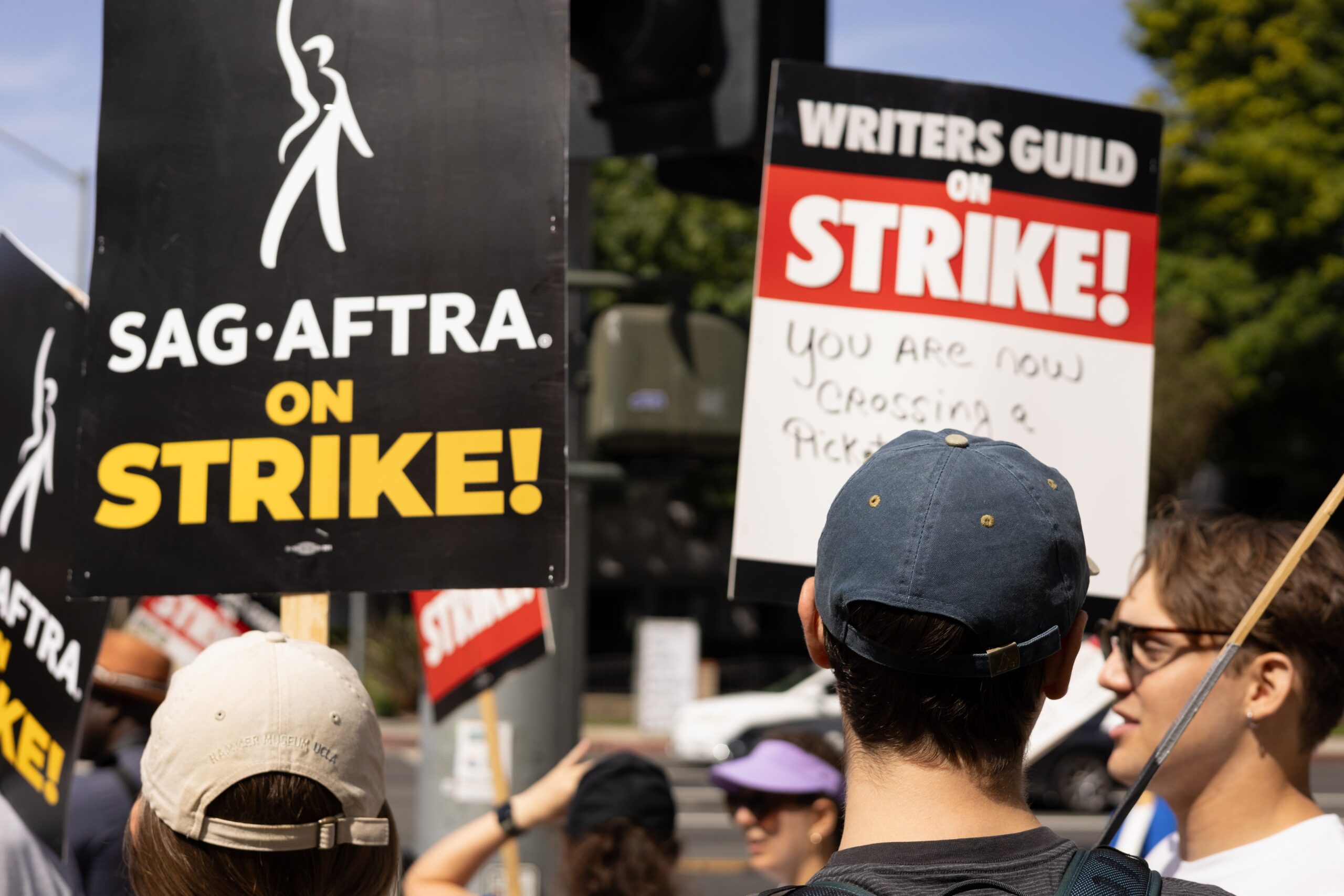Strike on Set: Behind the Scenes of the Hollywood Actors Strike
by Nicole Page
On midnight of Friday July 14th, the Screen Actors Guild- American Federation of Television and Radio Artists (SAG-AFTRA) union actors officially went on strike. SAG-AFTRA’s 160,000 members joined the Writers Guild of America (WGA) who have been striking since May of this year. Hollywood writers and actors have been known to produce media that makes us go weak in the knees, but now, striking in solidarity, they’re aiming for kneecaps.
The writer’s strike is impacting Hollywood and its ability to produce scripted programing. For a glaring example, look no further than the 2023 Tony’s being performed entirely improvised without a script, a compromise between the striking writers and the historic award show. But now, consider such a performance without the performers available to so much as improvise. If you struggle to imagine such a thing it might be because these two groups haven’t been on strike together since Reagan’s first presidency, his 1960 term with SAG-AFTRA.
There are several reasons that the SAG-AFTRA board voted unanimously to strike, but the role of streaming and new technology is a primary motivator. As with many other industries, the rapid development of technology, especially AI, has led to unexpected changes and uncertainty in Hollywood. In fact, SAG-AFTRA President Fran Drescher places much of the blame for the strike on the business models of streaming, AI, and digital.
Streaming services function differently from classic television in that the flow of money from successful programs to talent complicates the ability of performers to receive payment increases corresponding to their successful performance. Unlike television ratings and their more direct correspondence to actor and writer profit, more streams do not translate into higher compensation. Success is measured in numbers of subscribers and subscription revenues are not shared with creators.
Additionally, unlike standard television where successful shows are rewarded with frequent re-runs and new seasons, streaming services such as Netflix tend to cap successful shows at a few seasons in order to maximize profits. Because of such distinctions, streaming residuals are a major area of dispute in both the actors’ and the writers’ strikes. Unions are requesting 2% of subscriber revenue be shared with the casts of successful shows, but there seems to be no willingness to agree to this demand on the part of the streamers.
Another major factor in the strike negotiations is the warp-speed development of AI, which threatens to obviate the need for writers and actors. Today AI can write scripts. It can recreate voices and scan and use the likeness of actors. AI can create content and AI can steal existing content to generate new content, and so far, AI is entirely unregulated and a potential threat to livelihoods.
It has been over 60 years since actors and writers last went on strike together. As both strikes continue with no clear end in sight, the only certainty is that until compromise is reached on compensation and AI restrictions, no new union contracts will be signed.
 This article is intended as a general discussion of these issues only and is not to be considered legal advice or relied upon. For more information, please contact RPJ Partner Nicole Page who counsels clients in areas of entertainment, employment and intellectual property. Ms. Page is admitted to practice law in New York and the United States District Courts for the Southern and Eastern Districts of New York.
This article is intended as a general discussion of these issues only and is not to be considered legal advice or relied upon. For more information, please contact RPJ Partner Nicole Page who counsels clients in areas of entertainment, employment and intellectual property. Ms. Page is admitted to practice law in New York and the United States District Courts for the Southern and Eastern Districts of New York.

